
VNU Journal of Science: Economics and Business, Vol. 35, No. 5E (2019) 1-11
1
Original Article
Lao PDR and Vietnam Trade and Economic Linkages:
Performance and Prospects
John Walsh1,*, Nittana Southiseng1, Nguyen Quang Trung2,**
1Nittana Southiseng, GZI-MRC Vientiane
2RMIT University, Handi Resco Building, 521 Kim Ma, Ngoc Khanh, Ba Dinh, Hanoi, Vietnam
Received 27 September 2019
Revised 20 December 2019; Accepted 26 December 2019
Abstract: Lao PDR and Vietnam share an extensive land border and there are a number of points at
which border crossings can be made and border trade conducted. The connectivity of these crossings is
to be intensified by cross-border transportation infrastructure such as the Vientiane-Bolikhamsay-Vung
Anh deep seaport railroad, which would facilitate exports from landlocked Lao PDR. Such
infrastructure will improve existing Vietnamese investment in its western neighbour, where more than
400 projects worth more than US$5 billion have already been licensed in activities such as hydropower,
industrial tree plantation and mining. This paper investigates the extent of Lao-Vietnamese border trade
and cross-border investment and the prospects for the future in an international environment challenged
by trade wars, volatility and global climate change. The strength of these links is noted and the bright
prospects for future development acknowledged.
Keywords: Border trade, cross-border investment, Lao PDR, telecommunications, Vietnam.
1. Introduction***
The history of rapid economic development in
East Asia has been characterised by relationships
between the public and private sectors such that
private sector organizations are at first compelled
by the state to help accomplish state-level
developmental goals and, subsequently,
incentivised to do so after a re-negotiation of the
relationship between the two sectors. Glassman
_______
* Corresponding author.
E-mail address: John.walsh2@rmit.edu.vn
https://doi.org/10.25073/2588-1108/vnueab.4261
** An earlier version of this paper was presented at the
Conference on International Economic Cooperation and
Integration (CIECI), held at the University of Economics
and Business (Hanoi, September, 2019).
(2018: 378) observed that: “States - autonomous
or otherwise - do not act, rather classes and class
fractions act through them, just as they act
through markets” [1]. To some extent, this is
related to the large-scale privatisation of state-
owned enterprises (SOEs), which commonly
accompanies the move towards the market.
Maintaining a dominant economic role for the
state can ensure the continuing importance of the
state capacity, even though ownership structures
may have changed [2].
The developmental goals may be
international as well as domestic, especially in a
world in which globalisation and its attendant
forces have made cross-border flows so
convenient and common. In the case of
Vietnam, while it is managing its internal

J. Walsh et al. / VNU Journal of Science: Economics and Business, Vol. 35, No. 5E (2019) 1-11
2
transformation through application of the
paradigm of import-substituting, export-
oriented, intensive manufacturing with
competitiveness based on low labour costs, it is
also managing to create a presence overseas
through fractions of the business class. In Lao
People’s Democratic Republic (PDR), resource-
seeking activities are the most important form
of motivation for most Vietnamese investment,
which is shown in the various plantations and
mining operations to be found there [3]. Yet a
financial return is not the only motive for a
rapidly developing government to wish to
pursue overseas activities. Market share in a
strategically important industry can provide
significant political strength, particularly in a
landlocked country which needs to maintain
good relations with all of its neighbours in the
hope of promoting a viable means of exporting
[4]. In the case of mobile telecommunications,
such an opportunity presents itself as, in the
absence of viable domestic competition, a
well-resourced foreign competitor could quite
quickly establish itself as having a strong
market position. Viettel, which is supported by
the Vietnamese state, has already demonstrated
in Cambodia that it has the resources to defeat
any and all competitors [5] and can also
compete in terms of making high technology
available to its customers [6]. The company has
established a strong competitive position in Lao
PDR and, with a network of positions in
countries around the world, it will not need to
try to squeeze a profit out of every branch. This
is an example of one fraction pursuing a
specific developmental goal within the overall
mixture of fractions pursuing different goals
and different types of goals with respect to one
neighbouring trade partner. This paper
considers the range of trade and investment
activities linking together the countries of Lao
PDR and Vietnam with a view to understanding
the different types and motivations of trade and
investment that are taking place. This degree of
diversity helps explain the apparently
non-rational activities that are sometimes seen.
This paper follows a critical-analytical case
study approach. That is, it involves a focus on
specific events, individuals and organizations
that recognises, in terms familiar to Bourdieu,
that activities observed are: “… the products of
not just one field - not even one as
encompassing as the social space - but of
relations, balances, tensions and harmonies
between a multitude of fields vying for
attention” (Atkinson, 2016: 6-7, emphasis in
original) [7]. As a result, it is not always
possible to allocate motives and actions into
discrete categories and it reflects the purpose of
this paper that there are not always clear
answers to these questions. The paper continues
with a consideration of the relationship between
the two countries and then considers various
aspects of cross-border trade and investment.
2. Vietnam and Lao PDR
Vietnam and Lao PDR share a very long
land border and a lengthy history as members
of mainland Southeast Asia, which has now
been designated to be part of the Greater
Mekong Subregion (GMS), along with
Cambodia, Myanmar, Thailand, Yunnan
province of China and Guangxi Zhuang
autonomous zone, also in China. The history of
the two countries has been influenced by their
location as southern neighbours to China (albeit
separated from the country by difficult terrain)
and shared histories of ethnic group migration
and movement. After colonisation by France,
both countries achieved independence through
armed political revolutions in the 1970s and,
after the collapse of the Soviet Union, both
countries have been required to introduce
economic reforms and more market-based
activities while maintaining their existing
political orders. Vietnam has a large population
and important urban centres in Hanoi and Ho
Chi Minh City, as well as ports and internal
infrastructure to support investment and trade,
which has been demonstrated by the large
investments made by Samsung in the country
which have made it Vietnam’s largest
employer. By contrast, Lao PDR has no access
to the sea and its small population is sparsely
spread across mountainous and forested lands.

J. Walsh et al. / VNU Journal of Science: Economics and Business, Vol. 35, No. 5E (2019) 1-11
3
The general global consensus that economic
growth means accepting inwards foreign direct
investment (FDI) has led to both countries
having become opened to investment from
around the world, more or less irrespective of
the influence that those investment projects
would have. From a scholarly perspective, most
attention has been fixed on the scope and scale
of FDI into both Vietnam and Lao PDR and the
readiness of those countries to accept that
investment. Comparatively little attention has
been placed on the trade and investment links
between the two countries from a business
management perspective, although there have
been studies related to political economy,
migration, sociology and regional studies. The
purpose of this paper, therefore, is to investigate
trade and investment issues involving
neighbouring Lao PDR and Vietnam and the
identification of issues and challenges to those
links that might be profitably explored. This has
been attempted through a critically-analytical
study of the current situation and prognosis of
what is likely to develop in the future. One
sector of particular interest is mobile
telecommunications, since this has a pivotal
role in facilitating further economic
development and improving quality of life for
all sectors of the population. As a result, this
sector is given additional attention. It is found
that one of the principal problems facing the
countries involved is the lack of capacity in
terms of small and medium-sized enterprises,
since at least some of these need to be
developed in order to be able to participate fully
in regional supply and value chains.
3. Border trade
Border trade involves any form of cross-
border transaction involving two or more
countries. It can include both formal and
informal activities, such as border markets,
border traders and short or long-distance cross-
border merchants. In the case of Lao PDR,
many of the people involved in these activities
are women, who contribute to the feminisation
of border activities in mainland Southeast
Asia [8].
There are seven border crossing points
available for commerce on the Lao-Vietnam
border, which is some 2,337 km long and is to a
large extent based on the mountainous region
between the two countries, which have a sparse
population and little economic value.
Consequently, the border itself was not
demarcated until after the successful
revolutions in the 1970s [9]. The border
crossings are at Sobboun-Tay Trang, Banteui-
Nameo, Nam Can-Namkan, Nam Phao-
Keoneua, Napao-Chalo, Dansavanh-Lao Bao
and Phukeua-Bo Y. Governments of both
countries have reached agreements to promote
border trade and to enhance trade facilitation.
The value of the trade was US$936 million in
2017 and it has been increasing each year [10].
In 2018, the value exceeded US$1 billion.
Trade is regulated by the “Border Trade
Agreement between the Government of the Lao
People’s Democratic Republic and the
Government of the Socialist Republic of
Vietnam” signed in 2015 as the latest in a series
of bilateral agreements between the two
countries which began in 1977 [11]. Altogether
there are seven main border gates, eight
international border gates, 18 auxiliary border
gates and a large number of trails across the
countryside, as well as eight border economic
zones. A total of 36 markets have so far been
established [12].
Most investment flows associated with
border trade have involved Vietnamese
investment in its neighbour. To date, 292
projects with a value of US$5.1 billion have
been approved and, of these, 110 projects are
located in the 10 border provinces of Lao PDR
with a value of US$2.7 billion (ibid.). This
approach is seen as being a positive approach to
promoting economic development on a stable
basis and it is being further employed in the
case of the Cambodia-Laos-Vietnam Triangle
Area, which was established in 1999 “… with
the aim of strengthening the solidarity and
cooperation among the three countries and
ensuring security, political stability and poverty
reduction, as well as promoting socio-economic
development in the area” [13]. Security issues

J. Walsh et al. / VNU Journal of Science: Economics and Business, Vol. 35, No. 5E (2019) 1-11
4
include drug trafficking and unofficial cross-
border migration [14]. In mountainous areas
shared by Lao PDR and Vietnam, “Market
influences are increasingly permeating the
uplands of both countries although to varying
degrees, connecting them with not only
national, but also global commodity markets,
and leading to increasing differentiation within
and between ethnic groups [15]. When markets
are themselves illegal, as for example in the
case of some timber trading, this can have a
corrosive effect on state actors and lead to
further illegality [16].
At a conference reviewing Lao-Vietnamese
border trade in 2018, 11 booths for each side
were created and the Lao enterprises displayed
wooden products, home appliances, electronics,
rubber products, rice and sugar; meanwhile,
Vietnamese enterprises displayed cassava
starch, pepper, cucurmin powder, sweet
potatoes, peanut oil, citronella oil, coffee,
medicinal herbs, clean vegetables and Phuc
Trach pomelo [13]. It seems likely that, from
the Vietnamese perspective, the exporting of
agricultural commodities (and some products)
is the most important element of this trade. As a
contrast, two-way trade between Vietnam and
Yunnan province of China rapidly increased to
US$1.84 billion following the signing of a
border trade agreement and the total value of
Vietnamese fruit and vegetables to China as a
whole amounted to US$1.2 billion in the first
half of 2018 [17].
Table 1. Merchandise trade by value
(unit: US$1 million) (2017)
Principal exports
Principal export
markets
Principal imports
Principal import
sources
Lao
PDR
Copper ore (557),
rubber (193), gold
(155), rough wood
(37), non-knit men’s
suits (86)
China (1,180), India
(242), Japan (146),
USA (91), Germany
(90)
Broadcasting equipment (134),
delivery trucks (95), iron
structures (90), other steel bars
(88), hydraulic turbines (86)
China (1,340),
Japan (112),
South Korea
(92), Austria
(54), Czech
Republic (41)
Vietnam
Broadcasting
equipment (30,700),
telephones (14,900),
integrated circuits
(14,600), textile
footwear (9,500),
leather footwear
(6,060)
USA (46,200), China
(39,900), Japan
(18,100), South
Korea (16,100),
Germany (10,900)
Integrated circuits (15,600),
telephones (10,200), refined
petroleum (7,230), electrical
parts (4,690). Light rubberized
knitted fabric (4,510)
China (70,600),
South Korea
(47,700), Japan
(13,100),
Singapore
(11,800), Hong
Kong (10,100)
Source: Observatory of Economic Complexity (2019), oec.world/en/profile/country/lao and
oec.world/en/profile/country/vnm/.
Table 2. Net trade for agricultural commodities in Vietnam and Lao PDR (unit: US$million)
Item
Vietnam 2005
Vietnam 2016
Lao PDR 2005
Lao PDR 2016
Cereals and preparations
1,064
-953
-25
-90
Fruit and vegetables
589
-2,660
-9
52
Meat and meat preparations
-15
-3,589
0
-174
Dairy products (milk equivalent)
-251
-514
-34
Fish
2,488
5,997
-2
-2
Source: Food and Agriculture Organization, available at faostat.fao.rog/static/syb/syb-237.pdf
and faostat.fao.org/static/syb/syb-120.pdf.
;

J. Walsh et al. / VNU Journal of Science: Economics and Business, Vol. 35, No. 5E (2019) 1-11
5
Overall trade between Vietnam and Lao
PDR exceeded US$1 billion in 2018, with Lao
PDR exporting US$723.5 million and
importing US$552.2 million. Lao PDR
exported agricultural commodities such as
rubber, coffee, maize, cassava, rice and cattle,
as well as drinking water, minerals and wooden
products. It imported petroleum, fertilizer, steel,
machinery, electrical equipment, construction
materials and spare parts [18]. It is logical for
investment to accompany some forms of cross-
border trade. Dunning’s OLI paradigm would
suggest that companies will undertake foreign
direct investment overseas if it believes that
internalisation of a resource or activity will be
more efficient or profitable than an arm’s length
approach [19]. Vietnamese investment in Lao
PDR has been mostly located in the
hydropower, mining, transport, industrial tree
plantation and services (especially
telecommunications) sectors [20]. These
involve, therefore, both market-seeking and
resource-seeking activities. In a study of firms
involved in cross-border investments on the
China-Vietnam border, Wang, Yang and Chan
(2010) found that individual firm success would
be likely to be affected by [21]:
- Preferential tax policy, financial support
policy and land use policy;
- Some elements of the investment climate,
namely resource availability, market potential,
political and legal stability and infrastructure;
- Financial support policy is associated with
regional attributes and
- Performance is influenced by region-
specific elements such as resource availability,
transport, governance, logistics, electricity
supply and geographical location.
It is apparent that there is scope for
improvement in trade facilitation procedures in
both Vietnam and Lao PDR. Research indicates
that the regulatory environment, physical
infrastructure and communications technology
all have a definite impact on export
performance [22]. Nevertheless, the border
trade phenomenon is a strong one in the case of
Lao PDR and Vietnam and helps explain the
relationship between them. Proximity, in this
case, has helped cooperation in many other
fields in addition to the economic one.
4. Transportation infrastructure
Lao PDR is a landlocked country without a
coast of its own and this means it faces
additional costs in managing exports and
paying for imports and must maintain good
relations with its neighbours in order for
international trade to take place at ll. It is not
surprising, therefore, that landlocked countries
face a development deficit compared to other
countries which have access to the sea [4].
JETRO figures estimate that to ship a 40 ft
container from Vientiane to Yokohama it costs
US$2,5000, compared to US$1,600 from
Phnom Penh and just US$1,000 from Hanoi.
Given that the border with Vietnam is
difficult in terms of topography, the logistics
systems of the country are quite limited and this
represents a further challenge to rapid
development. Recognising this problem, the
Asian Development Bank (ADB) has attempted
to reframe the country as being land-linked
rather than land-locked and argued that it can
benefit from the movement of goods within its
borders. To do so, it can benefit from the
ongoing attempts to build the Asian Highway
Network (AHN), which is a series of road and
rail links that are intended to join together all
the major places of production and
consumption within mainland Southeast Asia to
neighbours in all directions. In particular, this
strategy is related to the concept of economic
corridors, which the ADB claims are
“… proven to be an effective tool to enable
industrial proliferation, create jobs, upgrade
infrastructure, align infrastructure with urban
and social agglomerations, unify domestic
markets, and link production centres with
global value chains” [23].


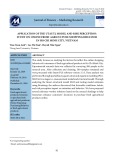

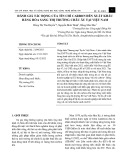
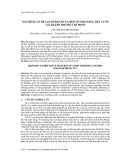
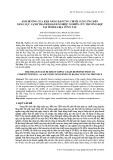
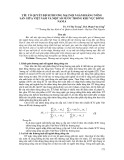
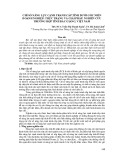
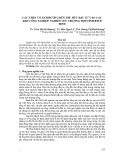
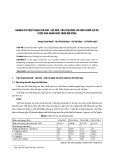
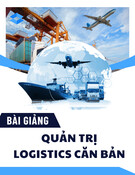
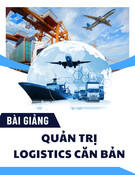
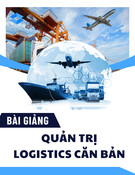
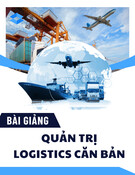
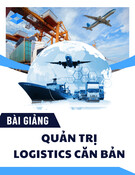

![Đề kiểm tra Quản trị logistics [mới nhất]](https://cdn.tailieu.vn/images/document/thumbnail/2025/20251015/2221002303@sv.ufm.edu.vn/135x160/35151760580355.jpg)
![Bộ câu hỏi thi vấn đáp Quản trị Logistics [năm hiện tại]](https://cdn.tailieu.vn/images/document/thumbnail/2025/20251014/baopn2005@gmail.com/135x160/40361760495274.jpg)







